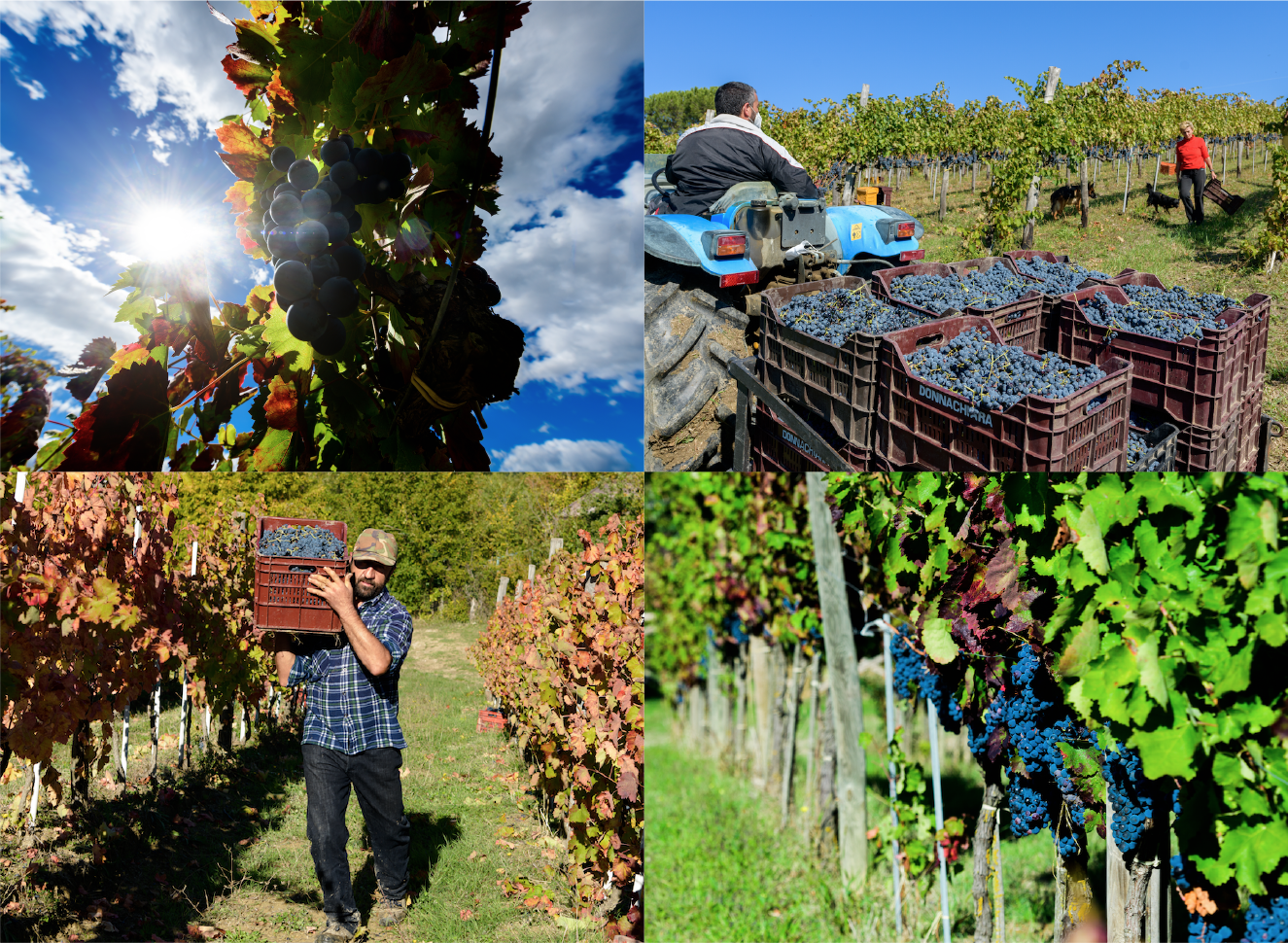Aglianico is a very old grape variety, probably originating in Greece and introduced in Italy around the 6th -7th century BC. Taurasi takes its name from the ancient city Taurasia. The history goes that after the Battle of Philippi, in Macedonia, the territory of Taurasia was assigned to Roman veterans who added to the cultivation of the Greek grape variety, the Hellenic vitis, which they brought from Macedonia. Since then, history and legend have often mixed up. In the 19th century, in the hilly area between the rivers Sabato and Calore, the so-called “Wine Railroad” was built, and Taurasi was one of the most important stations. The establishment of the Royal School of Viticulture & Enology in Avellino, which promoted and disseminated numerous scientific studies on TAURASI wine, contributed to making the area one of the most important Italian wine-growing regions, in terms of wine production and exports.
IRPINIA
GRAPE VARITIES
AGLIANICO

THE HISTORY
Taurasi, the first wine that has obtained the DOC seal of approval in 1970 in central Southern Italy and the first DOCG seal of approval in Southern Italy in 1993, is produced with Aglianico grapes.
Aglianico is a very old grape variety, probably originating in Greece and introduced in Italy around the 6th -7th century BC. Taurasi takes its name from the ancient city Taurasia. The history goes that after the Battle of Philippi, in Macedonia, the territory of Taurasia was assigned to Roman veterans who added to the cultivation of the Greek grape variety, the Hellenic vitis, which they brought from Macedonia. Since then, history and legend have often mixed up.
In the 19th century, in the hilly area between the rivers Sabato and Calore, the so-called “Wine Railroad” was built, and Taurasi was one of the most important stations.
The establishment of the Royal School of Viticulture & Enology in Avellino, which promoted and disseminated numerous scientific studies on TAURASI wine, contributed to making the area one of the most important Italian wine-growing regions, in terms of wine production and exports.
GRAPE VARIETY

Aglianico is a red wine grape variety,
which yields best in soils rich in clay and limestone. Its vigour ranges from medium to weak.
Its shoots are long, strong, and elastic, sparsely branched, with a striated surface. Its leaf is pentagonal, trilobate or pentalobate, medium in size, with the presence of a wide tooth and a petiole of medium length.
IThe upper surface of the lamina is dark green, while the lower surface is lighter
The shoot has a whitish colour with shades tending to pink. It usually germinates late and is quite susceptible to downy mildew and iodine but has a good resistance to rot.
The cluster can be cylindrical or conical, full but not oversized, deep red, with a medium-length peduncle. The berry is small-sized, spherical, or slightly oval, juicy, and purplish-blue, with white nuances, soft when fully ripe. The grapes are sweet, slightly tart, with small, green seeds.
DOWNLOAD THE AMPELOGRAPHIC DATA SHEET OF THE NATIONAL REGISTRY OF WINE GRAPE VARIETIES, BY MIPAAF




